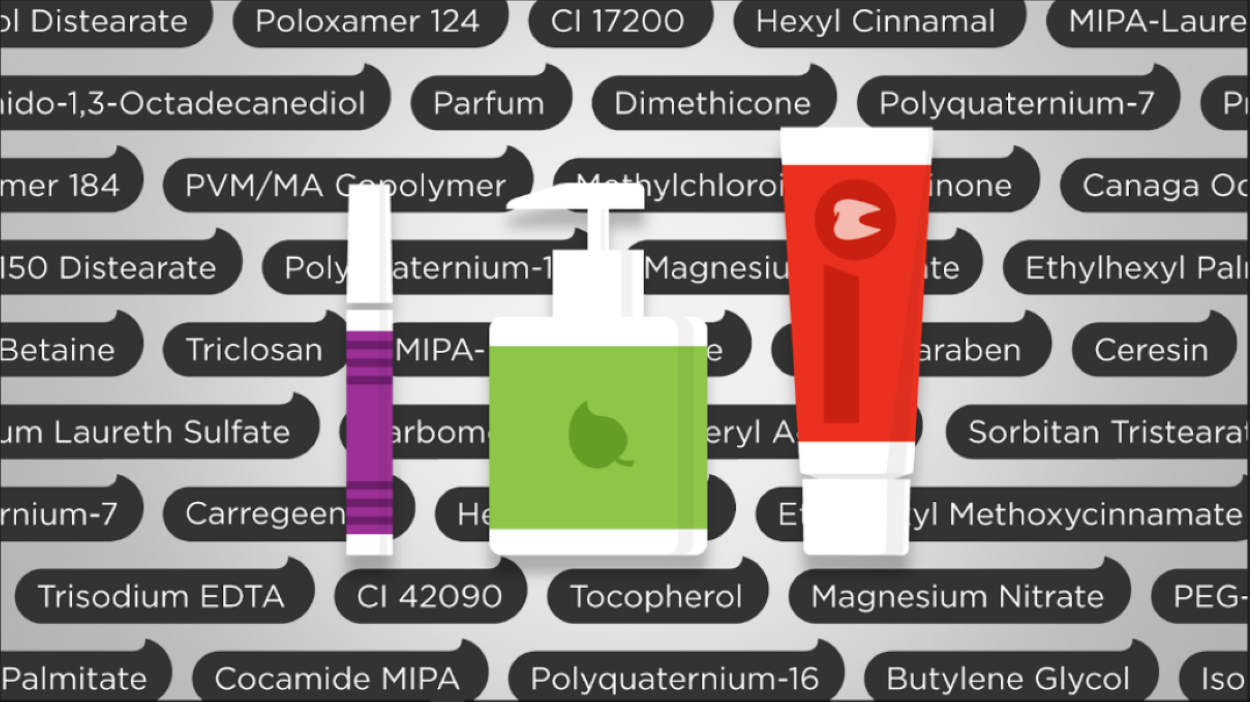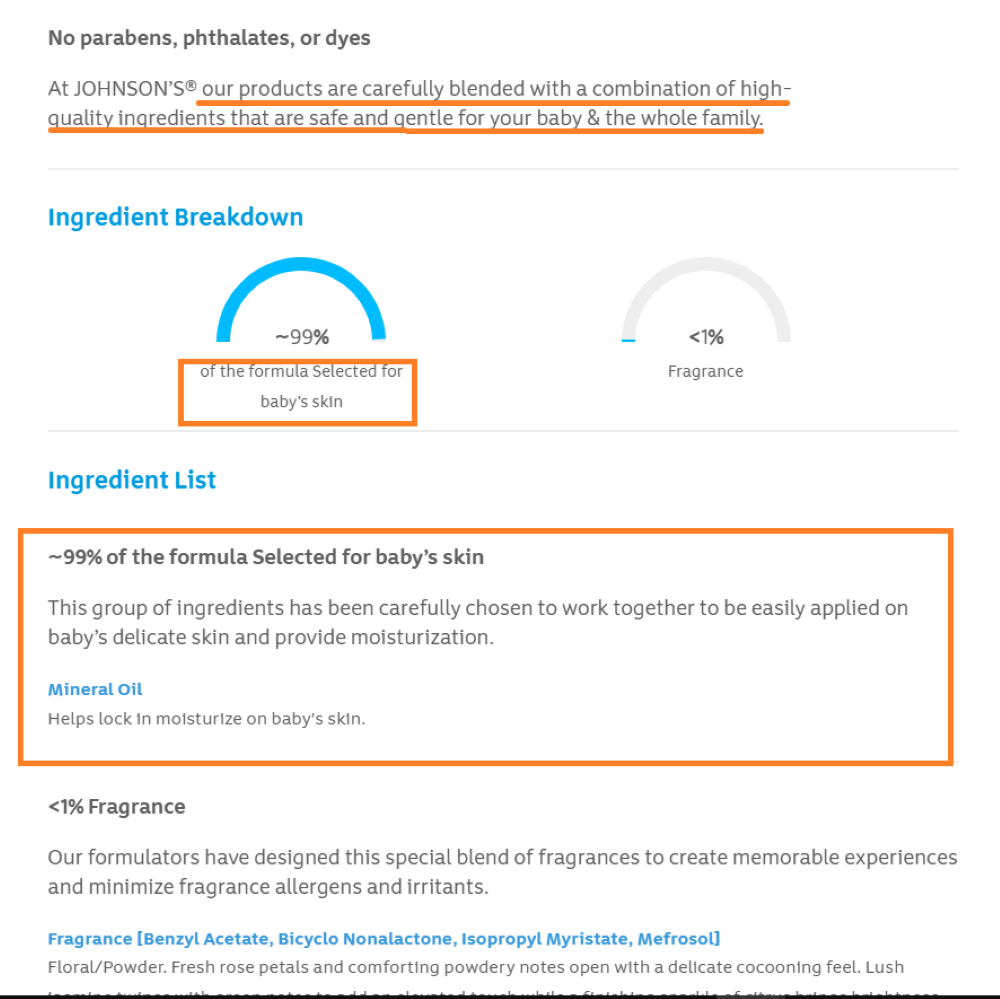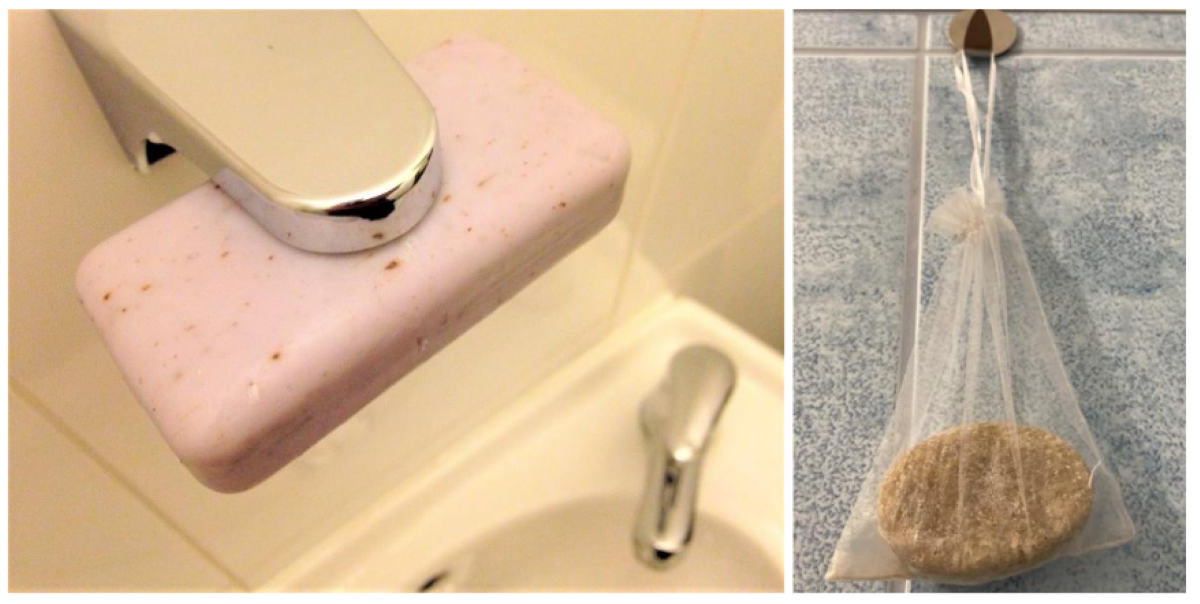As with cleaning and laundry detergents, you need to look at the ingredients and packaging (function and what it is made of). The composition of cosmetics is generally difficult to understand, as over 26,000 ingredients are used [1] (for more numbers and information on harmfulness, see the Toxic Cycle article). No wonder there is a huge amount of hair and body cosmetics on the market, when it is such a big business.

Source: GreenScan, Petr Miloš
One cannot help but notice how even the “big players” in the cosmetics market are going “green”. Many of them are almost coating us with this colour (deceiving us that they are green). Some have really tweaked the formula for the better, others are truly just pretending, to look good, since the global market for products which are natural, organic, eco, and so on, only keeps growing.
In 2021, it was estimated that the market value of “natural” cosmetics was $35 billion [2] and that is already a big enough reason to lie. When going to a drugstore, notice how more and more green packaging with pictures of grass, flowers and signs saying Organic, Eco, Natural, BHT-free or paraben-free (methylparaben, propylparaben, ethylparaben, butylparaben) there is – be careful with what they replace the parabens with, whether even worse preservatives or acceptable ones e.g. tocopherol (vitamin E), sodium benzoate, potassium sorbate, benzyl alcohol or Cosgard.
For example, one baby oil manufacturer states on their website that it is a child-friendly product free of parabens, phthalates and dyes. It is, but the oil in question is made of two ingredients – “petroleum” and perfume (see the picture, which doesn’t even specify what exactly it is). The main ingredient is a petroleum derived substance – mineral oil, sounds like something better after all, great marketing. The other ingredient is perfume (fragrance), which can mean basically anything, and it makes sense that it’s included, because sometimes you need to cover up the smell of crude oil. More on perfume in this article.

Source: www.johnsonbaby.com
How to choose and use hair and body cosmetics then?
As this includes a range of products, in this section we will focus only on shampoos, shower gels and soaps.
Some ads for cosmetics parasitise on words like natural, eco, organic, avocado extract, rose etc. However, they only contain very small amounts of these active ingredients. It can be as little as 0.2% of the total volume. You have no way of knowing the amount unless the manufacturer specifies it, which is a shame. Very often, there is water as the first ingredient on the list. But there’s nothing wrong with water, is there? There isn’t, and there is. If there is a lot of water, there must be more preservatives used and most importantly – you have water at home, why pay for such a cheap raw material in an expensive product.
It is better to choose products based on quality ingredients:
- If possible, reach for a product “without” water (or with only a small amount, so you don’t pay for water, water transport = more pollution – CO2, etc.). Water is a very cheap raw material for manufacturers. That’s why a bar of soap for washing hands, body and a solid shampoo can be a solution. If you are wondering “where do I store it” so the soap is not slimy and does not roll everywhere, I personally find a soap holder or a pouch ideal.
- I’ve had a very good experience with it, but you need to find one that suits the hardness of your water and your skin and hair type. You’ll probably have to try a few kinds. If it doesn’t fit your hair, however, you can still wash your body or hands with it. Again, those who used to make cosmetics with harmful ingredients see the business potential and have started making different cubes of soap for everything. That’s why it is hard to know what is good. Our GreenScan app can help, or sometimes avoiding buying from the big-name brands can help as well.

Where to store soaps? A hand-soap holder and a soap pouch for a solid shampoo.
Source: GreenScan, Žaneta Milošová
- No crude oil – that means without, Petrolatum, Paraffinum Liquidum, Liquid Paraffin, White Petrolatum, Liquid Petrolatum, Paraffine, Heavy Mineral Oil, Mineral Oil, Petroleum [3] and similar. These are bioaccumulative substances, i.e. they accumulate in the body, and are poorly biodegradable (they persist in the environment) [4]. Otherwise, they don’t seem to have much effect on health (they can be irritating, cause a burning sensation, and in production it’s not that great). It is literally recommended to avoid skin contact and use protective equipment and if you can’t avoid the contact with mineral oil, rinse the affected area with soap and water immediately [5].
Although crude oil substances don’t seem to be that dangerous, it is clear, that it is a cheap raw material and therefore widely used. Additionally, petroleum has been tested and is still being tested somewhere on rats and other lab animals, therefore a product that contains mineral oil most definitely isn’t Cruelty Free. You may have noticed somewhere that Petroleum is a carcinogen [6]. That is true, but only the medically pure version without cancer-causing effects should be used in cosmetics. In other products we may come across this ingredient but of very low purity and therefore with toxic or carcinogenic impurities. - If you want quality, avoid products with petroleum derivatives and instead reach for something that has real quality vegetable oils written in the ingredients list, e.g. argan, jojoba, poppy, coconut, hemp and such. I generally prefer ones that are grown locally (poppy, hemp, flax, calendula, apricot…) so it doesn’t have to be shipped across half the world, but I still use coconut sometimes.
- Perfumes – this is a chapter in itself, but in a nutshell, if the manufacturer does not state what source the perfume (Fragrance, Aroma, Parfum and other names) is from, according to the legislation (EU Regulation 1223) it can contain almost anything, and the manufacturer does not have to state what specifically its fragrances are composed of [7].
They may well be carcinogenic, mutagenic, toxic, and so on. That’s why it is good to see if the manufacturer says that the perfume is of natural, plant-based origin (sometimes indicated by * or **), e.g. lavender, jasmine, rose or Linalool, Limonene, Citral, etc. (these are naturally occurring substances in essential oils, sensitive people may be allergic to them). There are also natural fragrances of animal origin obtained, for example, from civet or beaver. You can learn more about perfumes in this article. - Microplastics – it’s not just about the plastic packaging, it’s also about what’s inside. These include the following macro and microplastics: (polyethylene (PE), polypropylene (PP), polymethyl methacrylate (PMMA), nylon (PA), polyquaternium, poloxamer, PEG and PPG). There is an app that, which will reveal if your product contains microplastics when you scan the product – The Beat the Microbead app. PEGs are referred to as “sceptical microplastics” [9], since there is no definition for them in the law, we just call them that.Their behaviour is not fully known, and therefore they raise concerns because we already know that some of them are not quite all right. According to current studies, some PEGs are considered completely safe and are found almost everywhere, even in the vaccine serum against COVID-19 [10].
We may not even know the main dangers of microplastics and “sceptical microplastics” yet, after all we’ve only known about them for a little while. However, we already know that they behave like a “sponge”, i.e. they collect toxic substances. This is a problem in the food chain, as the food chain also leads to bioaccumulation (accumulation, increase in the concentration of harmful substances in the body).We can find microplastics everywhere. In the sea, in animal tissue, in rivers, in soil and so on.
You may have noticed how the news that microplastics were detected in breast milk went around the world and got published in all magazines, newspapers, and TV [11], [12]. Hopefully, better formulas will be invented in the future and hopefully we will soon learn to use and dispose of plastics better. More on this topic in very interesting articles and study here and here or a very innovative method of “catching” microplastics in waters in this article. - Dyes – again, it’s all about marketing, we certainly don’t need them, although a shampoo or shower gel in blue, pink or any other colour is appealing, isn’t it? ? Some dyes are a problem, more on that in this article.
- Preservatives – as mentioned before, if there is water somewhere, there must be preservatives. They are added even to products without water to be safe, but there is certainly no need to use toxic or carcinogenic preservatives like formaldehydes, parabens or other endocrine disruptors (that is substances that disrupt hormones in the body, something that can cause infertility, sperm decline, increase in certain cancers, disrupt development or sexual behaviour [3]).
You can find more about preservatives or parabens here.Even in this case the manufacturers say they use only allowed and necessary amount, or they use it as an excuse. I believe that, but how many products do we use in a day, a week, or our whole life? The manufacturers don’t count that. For example, butylparaben is in shower gel, shampoo, moisturizes and so on, although only in “allowed amounts”. However, by using several products containing this or other harmful substance, it exceeds the maximum of allowed amount by a factor of several times.

A hand-soap, solid shampoo, shaving soap, body soap and dishwashing soap.
Source: GreenScan, Žaneta Milošová
- The rule of thumb can help you with choosing a product – less is more. You really only need a few ingredients, e.g. an oil (olive, coconut…) and a “better” oil with the desired effect – laurel, rose, jojoba, hemp. Sure, the manufacturer can add more vegetable oils for effect or scent. Then the manufacturer can also include sodium hydroxide, but no worries there. A reaction occurs during the manufacturing process, where the hydroxide will break down, so it won’t hurt you and the fact that the manufacturer lists it doesn’t have to scare you. You can see how little is enough. These are the active ingredients, which we ask for and want. We don’t need loads of preservatives, dyes and other “fillers”.
- Try concentrates. They usually come in plastic or paper bags to pour into the original packaging, or your own container. (Less packaging, more concentrated substance, less water, CO2 and waste.)
- Use only necessary quantities (everyone must try this for themselves). Depending on the amount of hair, body surface area, etc. Whether using solid or liquid products, always use a little amount of the product, mix with water in your palms and apply to hair or body.
- Make it yourself – you know what it consists of, and you will find that you only need a minimum of ingredients – articles on “make it yourself” products.
- Beware of online shops and stores presenting themselves as “healthy”, they have Organic, Eco, Vital, Health, Natural and so on in their name. Beware of them, as with the manufacturers, they also want to eat out of the bucket. Just because they use these words, which mean something good and healthy to most people, it doesn’t mean it’s true. Buying from such a “green online shop” can indeed be green but doesn’t always have to – it’s all about the ingredients of particular products.
Sources
[1] https://eur-lex.europa.eu/legal-content/EN/TXT/PDF/?uri=CELEX:32019D0701&from=en
[2] https://www.statista.com/statistics/673641/global-market-value-for-natural-cosmetics/
[4] https://echa.europa.eu/cs/home
[5] https://academicjournals.org/article/article1379770460_Aluyor%20and%20Ori-jesu.pdf
[6] https://www.nj.gov/health/eoh/rtkweb/documents/fs/1437.pdf
[7] https://echa.europa.eu/cs/information-on-chemicals/cl-inventory-database/-/discli/details/103490
[8] https://eur-lex.europa.eu/legal-content/CS/TXT/PDF/?uri=CELEX:32009R1223&from=ES
[9] https://www.beatthemicrobead.org/guide-to-microplastics/
[10] https://www.sukl.cz/sukl/otazky-a-odpovedi
[11] https://www.irozhlas.cz/veda-technologie/veda/mikroplasty-materske-mleko-kojeni_2210091108_mst
[12] https://www.theguardian.com/environment/2022/oct/07/microplastics-human-breast-milk-first-time


Good Job! I really need that!